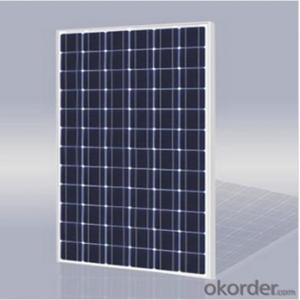280W Poly Solar Panel with TUV, IEC, CE ,UL Certificate for Solar System
- Loading Port:
- Shanghai
- Payment Terms:
- TT OR LC
- Min Order Qty:
- 300 watt
- Supply Capability:
- 1000 watt/month
OKorder Service Pledge
OKorder Financial Service
You Might Also Like
product description
Base stations - for mobil and internet provider
Polycrystalline silicon, also called polysilicon or poly-Si, is a high purity, polycrystalline form ofsilicon, used as a raw material by the solar photovoltaic and electronics industry.
Polysilicon is produced from metallurgical grade silicon by a chemical purification process, called Siemens process. This process involves distillation of volatile silicon compounds, and their decomposition into silicon at high temperatures. An emerging, alternative process of refinement uses a fluidized bed reactor. The photovoltaic industry also produces upgraded metallurgical-grade silicon (UMG-Si), using metallurgical instead of chemical purification processes.
Military and Paramilitary base stations
United Nations and other Humanitarian Aid & Relief Agencies
Mining Contractors (exploration/drilling)
Emergency Services (Natural Disaster Organisations)
Road, Bridge, Pipeline Construction Organisations
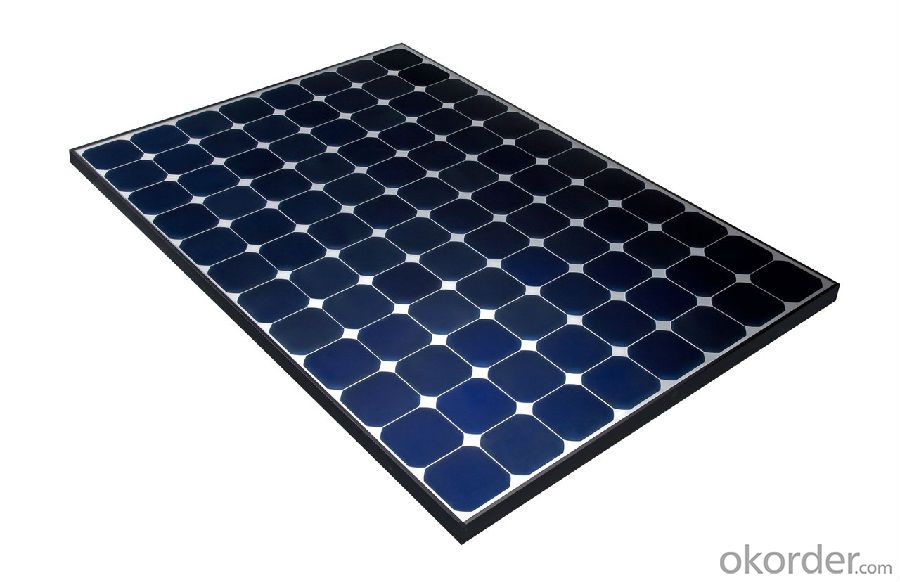

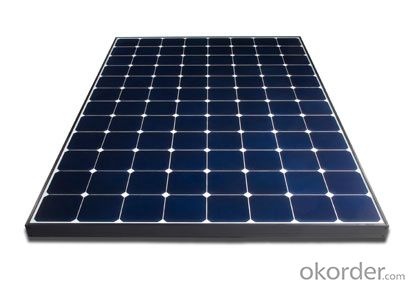
product characteristic
The E-series photovoltaic module comes with a 90% (12-year) and 80% (25-year) of rated minimum peak power warranty and a 10-year warranty on workmanship and materials
Positive power tolerance 0 to +5W
Internal by-pass diodes across 20 series cells resists effects of shading
Passed 3rd party testing: Salt spray and Ammonia resistance
Conforms to UL 1703, ULC-ORD-C1703-01 and CE
detail parameter
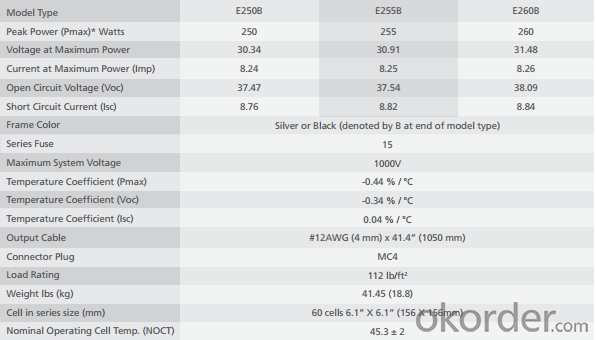
technological process

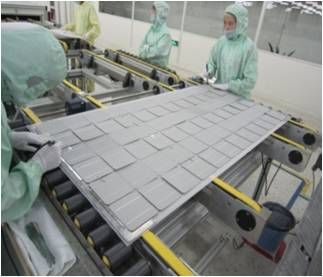
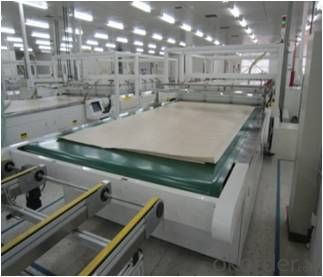
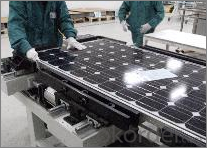
package&delivery
we pack goods with pallets and carton box
each one will be carefully examined by our staff.
- Q:Can solar panels be installed in areas with high levels of air pollution?
- Yes, solar panels can be installed in areas with high levels of air pollution. Although air pollution may slightly reduce the efficiency of solar panels, they can still generate electricity even in polluted environments. Regular maintenance and cleaning of the panels can help mitigate the impact of air pollution on their performance. Additionally, using advanced technologies and materials in the design of solar panels can also enhance their resilience to air pollution.
- Q:Has anyone had any experience building their own solar panels for home use? I have seen on the news lately that people are utilizing solar panels to power their hot water heaters to save on their power bill.
- The technologies of the photograph voltaic panels is a lot previous any DIY undertaking. you ought to purchase pre-assembled panels and set up them, yet you in addition to mght choose the units to make the DC they generate into the AC your place desires. additionally you will choose the batteries for the nights and the cases while the solar does not shine. photograph voltaic/ photograph voltaic technology does artwork yet isn't a miles less high priced thank you to decrease your reliance on the electrical powered grid as of this time. They fee 2 hands and a leg, and take some years yet to come back on the brink of wreck even on the electrical powered mark downs. Do a seek on the quantity of skill each and every panel will generate and then compute how lots skill you like and what the expenditures are. i think in photograph voltaic skill, yet no longer for somebody place of abode is it sensible. stable success.
- Q:hey, i am wanting to help our earth a little bit, and I was wondering how to do a solar panel connection for powering my home.... i just want to reduce my energy bill a little bit, Would these solar panels work?and how would i connect them?
- I okorder
- Q:What is the difference between Photovoltaic Panels and Solar Panels?
- Solar panels collect energy from the sun and then provide it to a system that typically concentrates it. Solar energy comes to us in the form of heat and light. Photovoltaic panels take the light energy from the sun and convert it to electricity. Although the maximum efficiency is around 42% in the lab most commercial models you will see are from 8 to 22% efficient. Adding collectors together concentrates this energy into usable amounts. Solar thermal panels are from 60 to 80% efficient. They come in many different types and collect the heat energy from the sun. That heat may then be stored in some form of thermal mass where it becomes concentrated sufficiently to be used. Solar thermal panels can be used to heat a medium. This can be a phase change material, air, or water. Solar thermal air panels are cheap to make and offer a quick pay back period. Solar thermal panels for some heating and hot water systems circulate water. Vacuum tube collectors are solar thermal panels that may heat water directly or a phase change materials. They can operate better in cloudy and colder weather with more efficiency. Air and water panels are often called flat panels as a way to contrast them with vacuum tube collectors. Solar thermal panels often lead to some form of energy storage called thermal mass (water tanks, phase change materials, masonry walls and rocks.) Photovoltaic panels make electricity that is stored in batteries, used or sent to the general grid. Panels are only one way to collect solar thermal energy. Other types of collectors are used commercially and are often called simply solar concentrators. Some are called parabolic trough collectors and parabolic dish collectors.
- Q:Is it possible for a 2V rated panel to charge a bank of batteries equal to around 36V? I believe that the panels should equal or exceed the voltage of the batteries but, I'm not for certain.
- you'll have to use 3 panels connected in series or use a dc to dc up converter, the former is a better option
- Q:I really want a projector but i hear they use a lot of energy because of the lamp. I want a good one to watch movies and play games on. but i don't want one that is gonna kill the lighting bill.is there like a solar panel or something i could use for it. PLZ HELP.
- Do understand, that a solar panel is slow to pay for itself. Let's say your electric bill was $200 a month ($2400 a year). A solar system would cost perhaps $24,000 so you would actually have paid your first 0 years of electricity in advance when installing the panels. After that 0 years, you start to be ahead financially. It can still be a good idea, but it may not be the quick and cheap solution you were looking for.
- Q:Can solar panels be used for powering electric gates?
- Yes, solar panels can be used to power electric gates. Solar panels convert sunlight into electricity, which can be used to operate various electrical devices, including electric gates. This renewable energy source is an environmentally-friendly and cost-effective solution for powering gates in remote or off-grid locations.
- Q:I know that one LED can't power a solar panel. I have found 40 kmcd LED's on OKorder. I know that several of them (28 totale each one with a 470 ohm resistor all at 2 VDC) can show a reflection on a wall in daylight 60 feet away..
- The 40 kmcd rating is a measure of luminous intensity (how bright it looks), not a measure of output power of the visible light. We can estimate the performance of your proposed system as follows: The LEDs on OKorder each are rated about 20mA maximum at about 3.2V, or 64mW (milliwatts). If you use 470 ohm resistors connected to 2VDC, the current that will flow, per LED, will be about: (2V-3.2V)/470ohm = 0.0872A = 8.72mA The power taken from the 2VDC power source will be: P2v = 2V x 8.72mA = 224.6mW (per LED) The power input to each LED will be about: Pled = 3.2V x 8.72mA = 59.9mW (per LED) The LED has a luminous efficiency that can range from about 4.2% to 22%. This efficiency is the ratio of the amount of visible light output (in watts) divided by the input power (in watts). The OKorder listing doesn't identify the output power level (either in watts or in lumens), so let's assume a 0% efficiency. The LED output power will be about: Pout = 59.9mW x 0% = 5.99mW (per LED) A solar panel converts visible light to electrical energy with an efficiency that ranges say about 6% to 8%. Suppose the solar panel efficiency is 2%. Then the electrical power output by the panel will be about : Pe = 5.99mW x 2% = 0.72mW (per LED) If you shine 00 LEDs on the panel, the output electrical power will be 00 times that amount: Pe00 = 0.72mW/LED x 00 LED = 72mW <===ANSWER The power taken from your 2V source will be about: P2V00 = 224.6mW/LED x 00 LED = 22460mW = 22.46W The system efficiency will be about: Eff = solar output / battery input = Pe00 / P2V00 = 72mW / 22460mW x 00% = 0.32% SUMMARY: If you shine 00 of the LEDs on the panel, you will capture back about 0.32% of the energy expended, or regain about 72mW.
- Q:Can solar panels be installed on an agricultural greenhouse or nursery?
- Yes, solar panels can be installed on an agricultural greenhouse or nursery. In fact, it is a growing trend to incorporate renewable energy sources like solar panels in agricultural operations. Solar panels can provide a sustainable and cost-effective solution for powering greenhouse operations, reducing energy costs, and minimizing environmental impact. Additionally, the open space on greenhouse roofs or nearby land can be utilized for solar panel installations, making it an ideal option for farmers and nursery owners looking to adopt clean energy practices.
- Q:I had installed over the summer a solar panel system on my house. Hers some infofor you: I live in MOThe system cost 25K (Rounded numbers)The Rebate from the utility company was about 0KThe expected tax rebate will be about 5KI have a home office from which I work and is 5% of my homes sq footage. My question is though I am getting a basic tax rebate, should I be able to claim part of this off as an expense for my home office?It seams logical since I used to deduct part of my electric bill and I there for should be able to write off part of this. I am, after all using electricity and getting a bill from the utility that is higher than it would be if I didn't have the office2. If so which amount should it be? The full 25K or something after the rebates.
- Home Office Write Off
1. Manufacturer Overview |
|
|---|---|
| Location | |
| Year Established | |
| Annual Output Value | |
| Main Markets | |
| Company Certifications | |
2. Manufacturer Certificates |
|
|---|---|
| a) Certification Name | |
| Range | |
| Reference | |
| Validity Period | |
3. Manufacturer Capability |
|
|---|---|
| a)Trade Capacity | |
| Nearest Port | |
| Export Percentage | |
| No.of Employees in Trade Department | |
| Language Spoken: | |
| b)Factory Information | |
| Factory Size: | |
| No. of Production Lines | |
| Contract Manufacturing | |
| Product Price Range | |
Send your message to us
280W Poly Solar Panel with TUV, IEC, CE ,UL Certificate for Solar System
- Loading Port:
- Shanghai
- Payment Terms:
- TT OR LC
- Min Order Qty:
- 300 watt
- Supply Capability:
- 1000 watt/month
OKorder Service Pledge
OKorder Financial Service
Similar products
New products
Hot products
